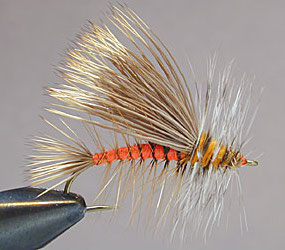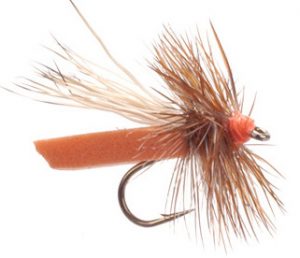 Caddis have always seemed to be one of the most overlooked and under-imitated aquatic insects in the fly fishing world. Maybe it’s because they haven’t been written about nearly as much as their sexier mayfly cousins over the years. I mean, mayflies are given names like Pale Morning Dun, Quill Gordon, and Gray Fox… just to name a few. Caddis are given names like Green Caddis, Brown Caddis, Black Caddis…
Caddis have always seemed to be one of the most overlooked and under-imitated aquatic insects in the fly fishing world. Maybe it’s because they haven’t been written about nearly as much as their sexier mayfly cousins over the years. I mean, mayflies are given names like Pale Morning Dun, Quill Gordon, and Gray Fox… just to name a few. Caddis are given names like Green Caddis, Brown Caddis, Black Caddis…
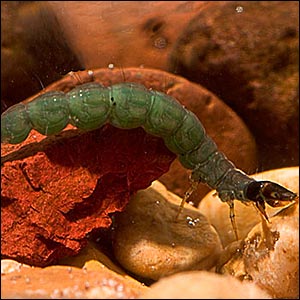
Regardless of the lack of respect given to caddis over the years, they have always been and continue to be abundant in nearly every body of freshwater and a staple in the diet of trout everywhere. I have numerous caddis patterns that I fish seasonally in the Smokies, but one that finds its way into the line-up more than any other is the Soft Hackle Wired Caddis.
There have been a number of wire body caddis patterns over the years and this is simply my variation on similar recipes. I sometimes tie it without a bead, but most often with a black tungsten bead at the head. It fishes well on a dead drift under a strike indicator but, especially when caddis are emerging, can be very effective fished with a drift and swing method. Learn more about this method and other similar techniques in this article on Active Nymphing.
Soft Hackle Wired Caddis
Hook: #18 – 12 TMC 2457 (or equivalent)
Bead: Black tungsten to match hook size
Body: Small chartreuse wire*
Back: Peacock herl woven between wire wraps
Thorax: Black or brown Wapsi Life Cycle dubbing*
Hackle: Black or brown hen*
*Other colors can be substituted to match specific caddis species
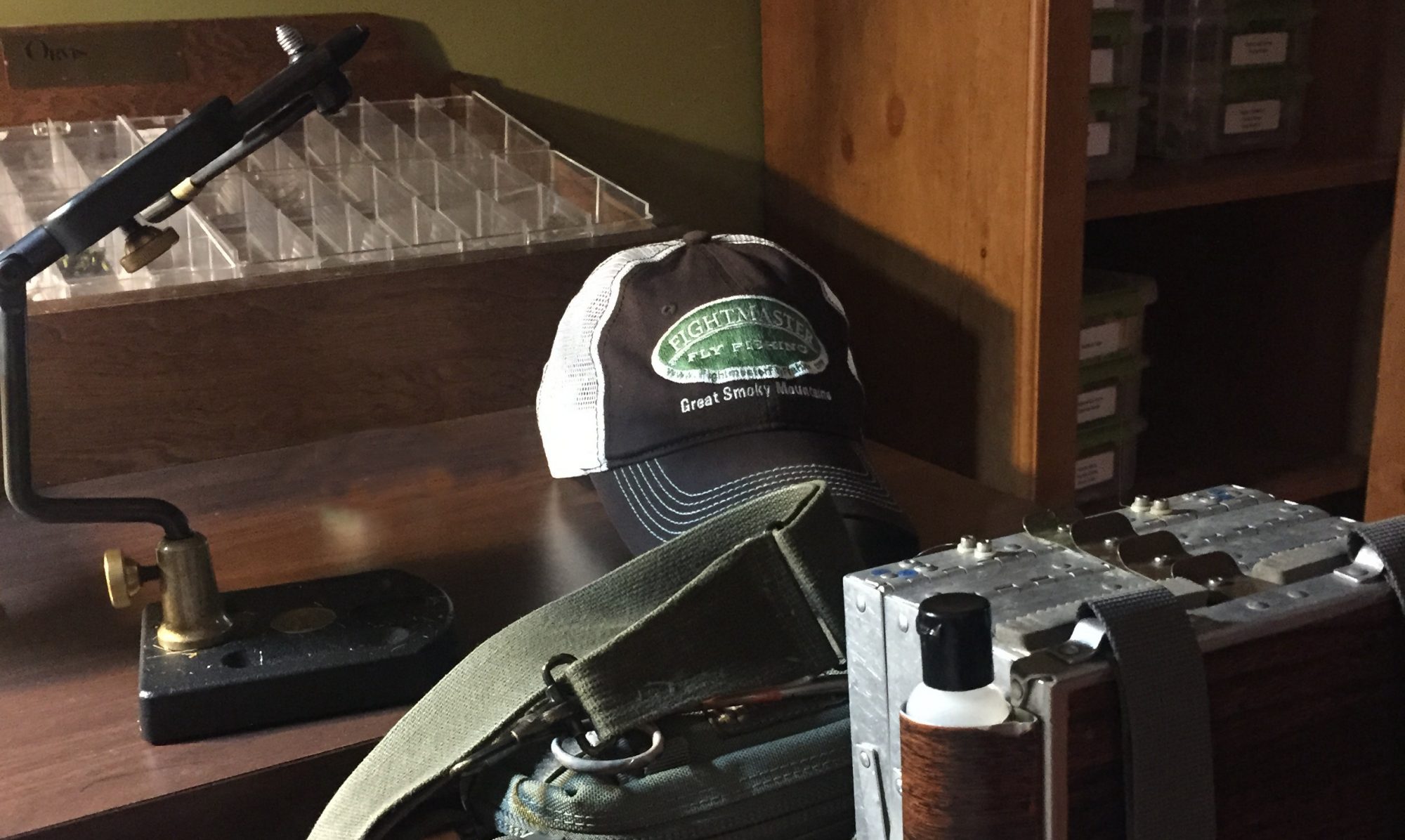
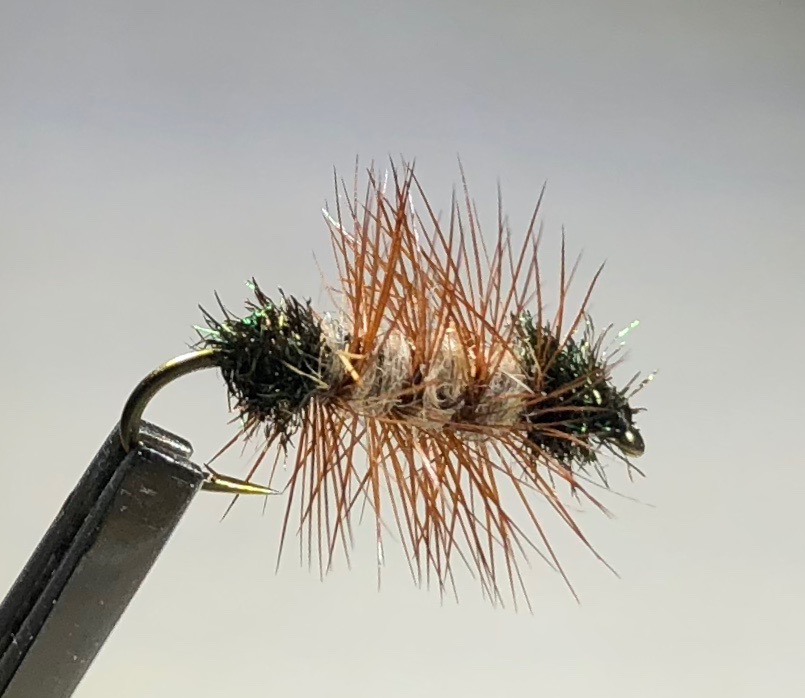 Few fly fishermen, if any, possess the knowledge and experience of Joe Humphreys. Joe is probably best known as a teacher and an author, but over his many decades in the business, he has also created a number of original fly patterns. By far, my favorite is the Humphreys’ Caddis Pupa.
Few fly fishermen, if any, possess the knowledge and experience of Joe Humphreys. Joe is probably best known as a teacher and an author, but over his many decades in the business, he has also created a number of original fly patterns. By far, my favorite is the Humphreys’ Caddis Pupa.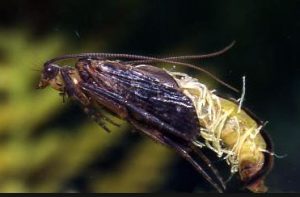
 Fly Tying is a lot like cooking in many ways. Of course, in both pursuits, you’re combining a variety of ingredients to create one final product. And the quality of those ingredients along with the skills of the person putting them together can tremendously impact the end result. But the issue of originality is also quite comparable.
Fly Tying is a lot like cooking in many ways. Of course, in both pursuits, you’re combining a variety of ingredients to create one final product. And the quality of those ingredients along with the skills of the person putting them together can tremendously impact the end result. But the issue of originality is also quite comparable. If you haven’t noticed by now, there are not a lot of “Hot New Flies” that I feature here. Most of the flies I fish with, particularly in the Smokies, are older, traditional patterns, or possibly an old staple that I’ve put a modern spin on. Maybe that makes me a curmudgeon. I don’t know. But until the old staples quit catching fish…
If you haven’t noticed by now, there are not a lot of “Hot New Flies” that I feature here. Most of the flies I fish with, particularly in the Smokies, are older, traditional patterns, or possibly an old staple that I’ve put a modern spin on. Maybe that makes me a curmudgeon. I don’t know. But until the old staples quit catching fish… The Ginger Caddis of the Smokies is known in other circles as the Great Brown Autumn Sedge. Many lump it together with a few other similar species and refer to them all just as October Caddis. No matter what we decide to call it, fish just call it food! Caddis of numerous varieties are available most of the year in the Smokies but really seem to come into their own in fall. And of the many caddis species hatching in the fall, the Ginger Caddis is the undisputed king.
The Ginger Caddis of the Smokies is known in other circles as the Great Brown Autumn Sedge. Many lump it together with a few other similar species and refer to them all just as October Caddis. No matter what we decide to call it, fish just call it food! Caddis of numerous varieties are available most of the year in the Smokies but really seem to come into their own in fall. And of the many caddis species hatching in the fall, the Ginger Caddis is the undisputed king.